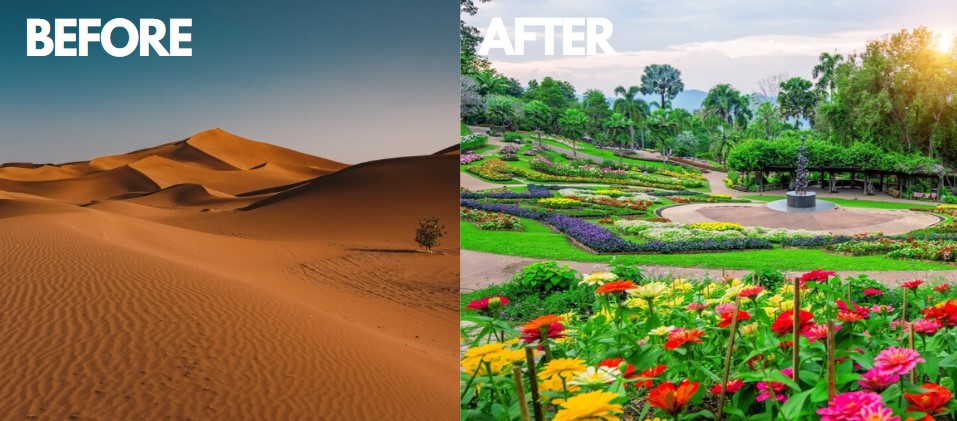Gardening in high desert climates presents some unique challenges. With low rainfall, intense sunlight, poor soil quality, and extreme temperatures, many plants struggle to thrive in these arid environments. However, with careful planning and the right techniques, you can have a thriving and beautiful garden, even in the high desert. Here are some useful tips for growing plants in high desert gardens:
Choose Drought-Tolerant Plants
Selecting plants that are naturally adapted to dry conditions is key. Look for drought-tolerant native plants that need little watering once established. Some good options include agave, yucca, sagebrush, rabbitbrush, native grasses, and cacti. Avoid thirsty plants like lawns, annuals, and non-natives that will require frequent irrigation.
Improve Soil Quality
Desert soils tend to be sandy, alkaline, and low in organic matter. Adding compost or other organic material to the soil will help retain moisture and provide nutrients. You can also work in sand or gravel to improve drainage. Using mulch helps reduce evaporation and moderate soil temperature.
Water Wisely
When you do water, do it deeply and infrequently to encourage deep root growth. Drip irrigation and soaker hoses are efficient ways to water desert plants. Water in the early morning or evening to reduce evaporation. Mulch around plants to retain moisture longer.
Use Landscaping Techniques to Maximize Shade and Water Retention
Strategically place plants, walls, trellises, and boulders to create a microclimate with shade and protection from drying winds. Channel rain runoff with swales and berms towards planted areas. Group plants according to their water needs.
Choose Plants for All Seasons
Select a mix of plants that provide year-round color from spring blooms to fall foliage. Cold-hardy plants can provide winter interest. There are many beautiful high desert plants to give seasonal variety.
Provide Protection from the Elements
Use shelterbelts and windbreaks to protect plants from harsh desert winds. Shade cloth helps reduce evaporation and sun exposure. Insulate roots from temperature extremes with mulch. Protect tender plants from freezing in winter months.
With smart plant choices, soil preparation, efficient irrigation, and design techniques, you can have a thriving high desert oasis. Follow these tips to create a ruggedly beautiful xeriscape garden perfectly adapted to arid climates.
Conclusion
Gardening in the high desert has its challenges, but using water-wise plants, efficient irrigation, mulch, and design techniques tailored to arid climates can help you create a beautiful oasis. With a little planning and care, even the harshest desert environments can burst into colorful life. Follow these tips to grow a thriving, low-maintenance garden perfectly suited to the high desert. and also visit 14 Most Clever Gardening Tips and Ideas.
FAQs About High Desert Gardening
What type of soil is best for a high desert garden?
Well-drained, sandy soil amended with compost and gravel creates an ideal soil texture. Avoid heavy clay soils that retain too much moisture.
How much should I water a high desert garden?
Water deeply and infrequently, about 1-2 times per week during hot weather. Adjust based on rainfall and plant needs.
What time of day is best for watering a desert garden?
Water early in the morning or in the evening to reduce evaporation. Avoid midday watering.
Should I use mulch in a high desert garden?
Yes, mulch helps retain soil moisture and moderates soil temperature. Organic mulches like wood chips work best.
What plants grow well in a high desert climate?
Drought-tolerant native plants like agave, yucca, sagebrush, cacti, and wildflowers. Avoid thirsty exotics.





